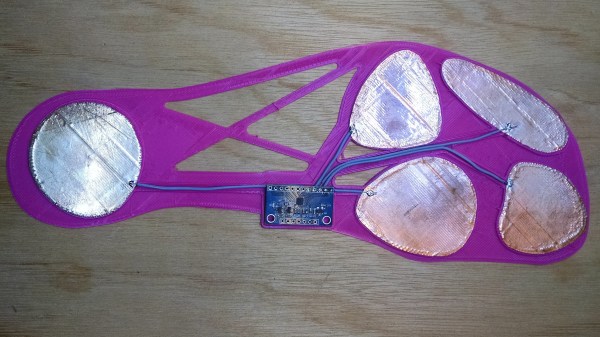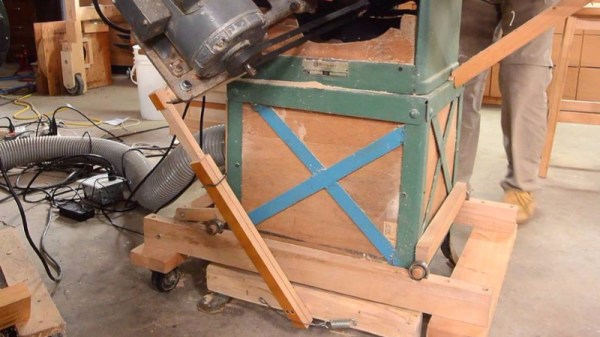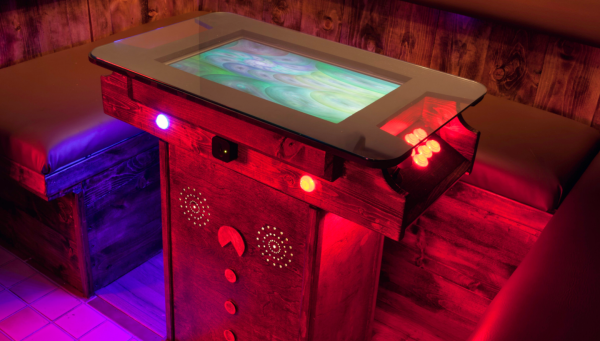Rehabilitating brain injuries where a patient’s sense of balance has been compromised is no easy task. Current solutions only trigger when the patient reaches a threshold and by then, it may already be too late for a graceful recovery. [Simon Merrett]’s SoleSense is being designed to give continuous feedback like a stock humans innate sense of balance. Therapists hope this will aid recovery by more closely imitating what most of us grew up with.
SoleSense relies on capacitive sensors arranged under the feet to know where the patients are placing their weight. [OSHPark] is providing the first round of flexible PCBs so some lucky sole is going to get purple inserts.
Outside of recovery, devices like this can teach better posture or possibly enhance a fully functioning sense of balance. That could improve physical performance. Who knows, we are finding new ways of perceiving the world all the time.
Remapping senses is a popular assistive technology and sound is ideal for the SoleSense to piggyback because brain injuries are less likely to affect hearing than other senses. Of course, senses can be remapped or even created. You could gain a sense of magnetic north or expand the range of light you can perceive.





















